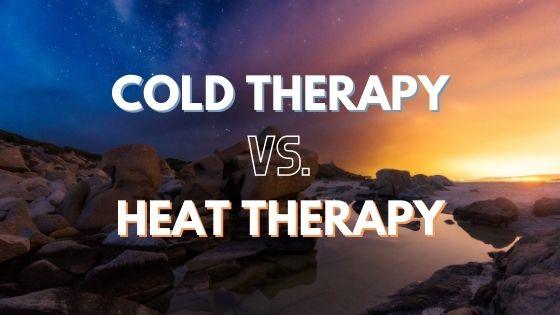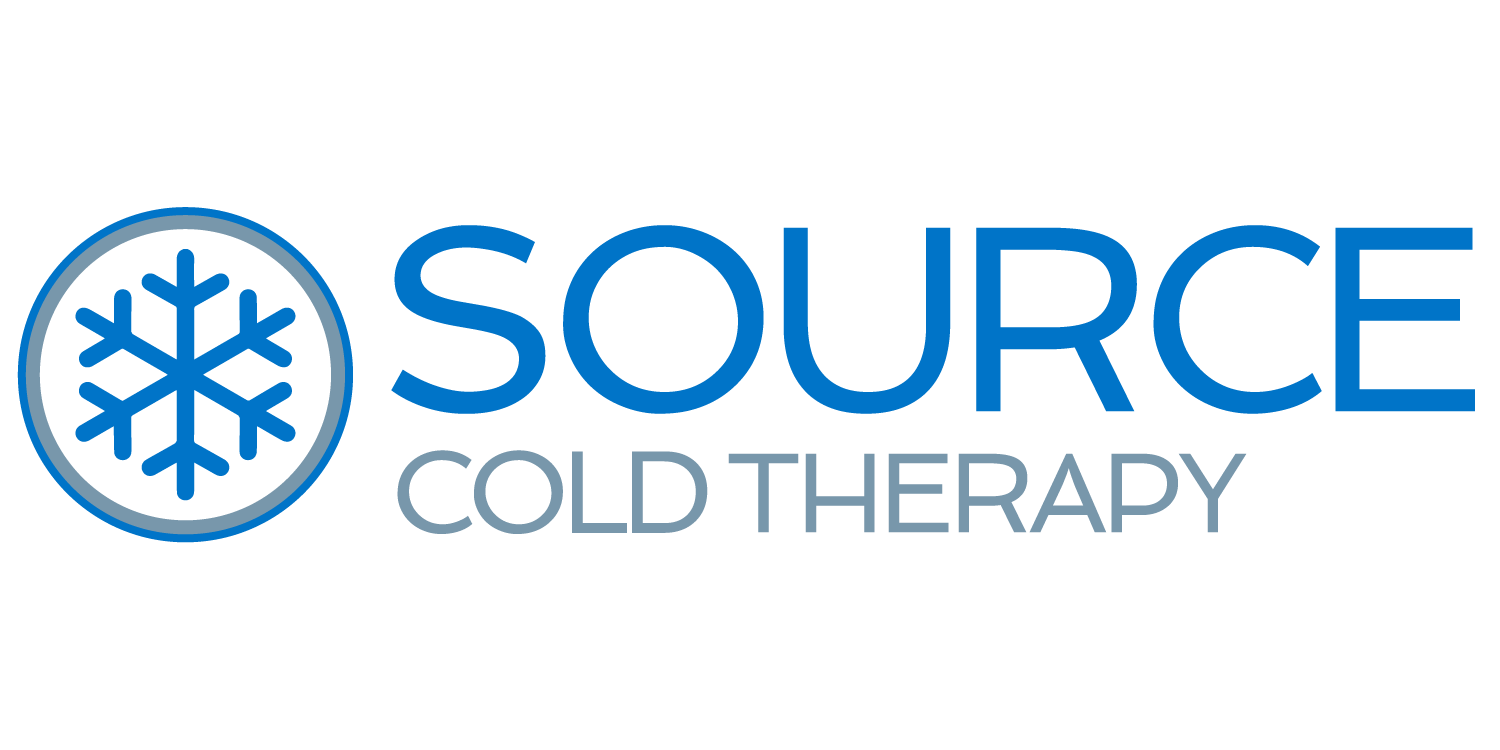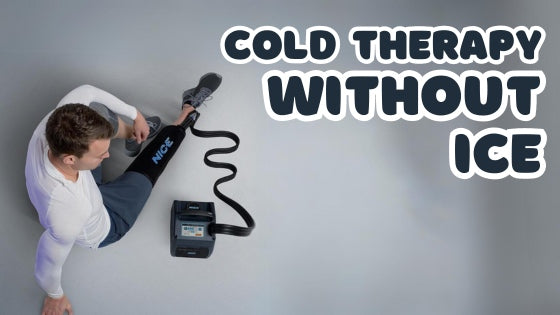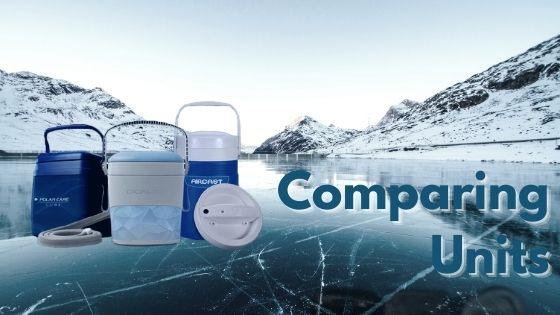When to Use Cold Therapy vs Heat Therapy

Heat Therapy VS. Cold Therapy
So you’re tending to an injury or sore muscles and you’re trying to figure out how best to treat it. Do you use a hot or cold compress... or both? Making sure you treat your injury properly is a very important step to reduce healing time and prevent further damage to the area. We’re breaking down when to use hot therapy, when to use cold therapy, and when to use both.
Before we dive too deep, here are the basics:
- Use cold therapy immediately following an acute injury to reduce inflammation
- Use hot therapy to relax and soothe sore or stiff muscles, as well as chronic aches and pains
Cold Therapy
As a general rule of thumb, cold therapy treatments should be used for recent, acute injuries such as a sprain, muscle tear, bruise, or other sports related injuries.The use of cold therapy for injuries involving inflammation is helpful helps in reducing the swelling by constricting the blood vessels and slowing the blood flow to the area. Applying cold therapy treatments is most effective within the first 48 hours of incident to help reduce healing time and prevent excess swelling and bruising.
Here are a few examples of the types of injuries or conditions cold therapy is best for:
- Gout
- Headaches
- Muscle Strains
- Acute Inflammation
- Acute Injury (within 48 hours)
- Post Surgery
What Type of Cold Therapy Should I Use?
There are many different options when it comes to administering cold therapy treatments, from ice packs, to cold packs to even more advanced cold therapy machines with and without compression features.
- Bag of Ice - A simple solution when you have nothing else on hand. Just be sure not to apply ice directly to your skin. Instead, try wrapping it in a wash cloth, towel, or t-shirt.
- Cold Packs - Cold packs are a great and inexpensive solution for relieving aches and pains caused by minor, acute injuries such as bruises and minor sprains. These are more beneficial than ice in a bag since they are generally designed not to freeze completely which allows them to better form around your body for more targeted, comfortable treatment.
- Cold Therapy Machines - cold therapy units are ideal for more serious injuries or following surgeries to help prevent swelling and reduce overall healing time. There are motorized and non motorized options available that can provide up to 10 hours of cold therapy, depending on the unit. These are ideal for use after surgeries such as joint replacements.
- Cold Therapy Machines with Compression - these cold therapy units provide the same wonderful benefits as typical cold therapy units, but with an added compression component which provides intermittent compression along with cold therapy. These units are ideal for post-op joint recovery and more serious sports related injuries to provide optimal control of swelling to minimize pain and reduce the risk of hemarthrosis or edema. If you have been advised to follow the RICE (rest, ice, compression, and elevation) treatment plan by your doctor, this is a great option for you.
Heat Therapy
Contrary to cold therapy which reduces blood flow, heat therapy helps to stimulate blood flow. Applying heat to sore or stiff muscles helps to relax the muscles while increasing oxygen and reducing lactic acid which is a common cause of muscle stiffness. Once the muscles are relaxed, they become more flexible allowing an increased range of motion. Since heat therapy increased muscle elasticity, it can be helpful to use before physical activities as a ‘warm up’. Heat therapy is also beneficial for other common issues such as menstrual cramps or muscle spasms.
Here are a few examples of the types of injuries or conditions heat therapy is best for:
- Stiff muscles
- Muscles Cramps
- Chronic Injuries and Inflammation
- Muscle Spasms
- Arthritis
- Menstrual Cramps
What Types of Heat Therapy Should I Use?
- Take a Warm Bath - warm baths are free and especially helpful for all over aches and pains, however they do not allow targeted treatment so a specific area.
- Electrical Heating Pad - while these are effective at applying heat therapy to a targeted area, they require access to electricity and can be a bit of a safety hazard.
- Heat Wraps - heat wraps are a great for providing targeted heat therapy to relieve sore muscles, or chronic aches and pains. Additionally, many wraps on the market are capable of providing both cold and hot therapy, such as ActiveWraps. These wraps are moldable in order to contour to your body to provide targeted, effective relief heat to the injured area.
The Case For Using Both Heat and Cold Therapy
Depending on your specific injury, many times it is helpful to begin incorporating heat therapy after the first few days of treating with cold therapy. This is especially true for chronic pain management, exercise induced injury, and arthritis. Additionally, if you are an athlete, the use of both heat and cold therapy is especially helpful to you. Try applying heat before activity to loosen up your muscles and follow up with cold therapy to help with recovery post activity.
Here are a few examples of the types of injuries or conditions heat therapy is best for:
- Chronic Injuries
- Chronic aches and pains
- Arthritis
- Sports related injuries (after 48 hours)
- Exercise related injuries (after 48 hours)
- Muscles Sprains (after 48 hours)
Overall, alternating between heat therapy and cold therapy is incredibly effective at reducing pain because you are getting the benefits of both increased circulation from the heat and reduced swelling from the cold increase overall recovery time. It is recommended to alternate cold and heat therapy by doing 20 minutes of cold, 20 minutes off, followed by 20 minutes of heat. However, before you start any form of treatment for injury or recovery, it is always best to consult with your doctor.






Leave a comment